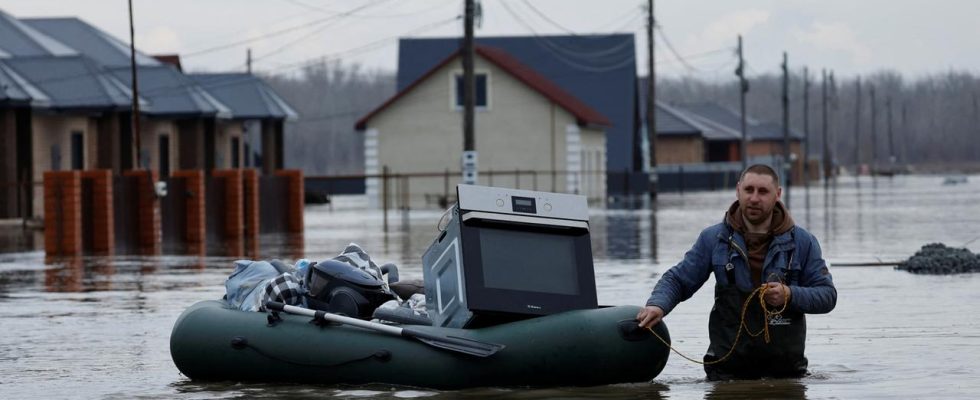Entire towns in Russia on the border with Kazakhstan are still under water. Most say nature is to blame. But critical voices also point to deficiencies in the dams.
The civil protection agency uses megaphones to call on people to clear the areas at risk. Images from Russian state television show houses with only the roofs visible and people standing up to their stomachs in water or walking on streets – in boats instead of in cars. “I didn’t want to leave,” says one resident. “I thought I was too old and wouldn’t go. But they convinced me.”
More than 100,000 people have to evacuate their homes. They now spend the time in emergency shelters or with relatives or friends in non-hazardous areas. Authorities said settlements in the Ural Mountains, Siberia and northwestern Kazakhstan were affected.
Still emergency calls
In Orenburg, a city with around 550,000 inhabitants, the water of the Ural, the third longest river in Europe, is still rising – at a rate of up to 70 centimeters in 24 hours. The water level was recently at ten meters. A total of 7,700 people were brought to safety. And there are still emergency calls, Sergei Salmin, mayor of the city of Orenburg, told the Rossiya broadcaster:
We are still receiving calls for help. At the moment we don’t have exact figures; they are adjusted literally every five to ten minutes. But we still receive calls asking for help. That’s why all the rescuers are now outside with their equipment.
The city of Orsk was hit worst. More than 6,700 houses were trapped there by the waters of the Urals. But here the level is now slowly falling again.
Dam failures in the Urals
The reason for the flooding is heavy rainfall at the same time as large amounts of snow melting very quickly. And dams burst in the Urals, two near the city of Orsk.
A criminal investigation has been launched into suspected construction violations that may have led to the dam failures. Last month, it is said, local authorities were made aware of deficiencies, but officials ignored them.
For now, however, Kremlin spokesman Dmitry Peskov refuses to assign blame. “It’s not the time to hand out grades right now,” he says. “Somewhere the flooding may not have reached its peak yet and the situation is still evolving. So now is not the right time.”
Maintenance not sufficiently funded?
The newspaper Izvestia suggests that corruption may have led to the neglect of the Ural dams. And that their maintenance was not adequately financed. Literally, the article says: “Expenses for the operation of the dam have been reduced in recent years – from 2.7 million rubles to 1.6 million.”
Yulia Navalnaya, widow of Kremlin critic Alexei Navalny, who recently died under unclear circumstances, also spoke from abroad. She wrote in a short message service: “The authorities in our country are surprisingly never prepared for anything: not for frost and snowfall in winter, not for fires in summer and not for floods in spring.”
This leads to criticism of a lack of investment in infrastructure. But even Navalnaya does not openly link this to the fact that Russian money is instead flowing into the Russian war of aggression against Ukraine.
Björn Blaschke, ARD Moscow, currently Tbilisi, tagesschau, April 10, 2024 5:40 p.m

